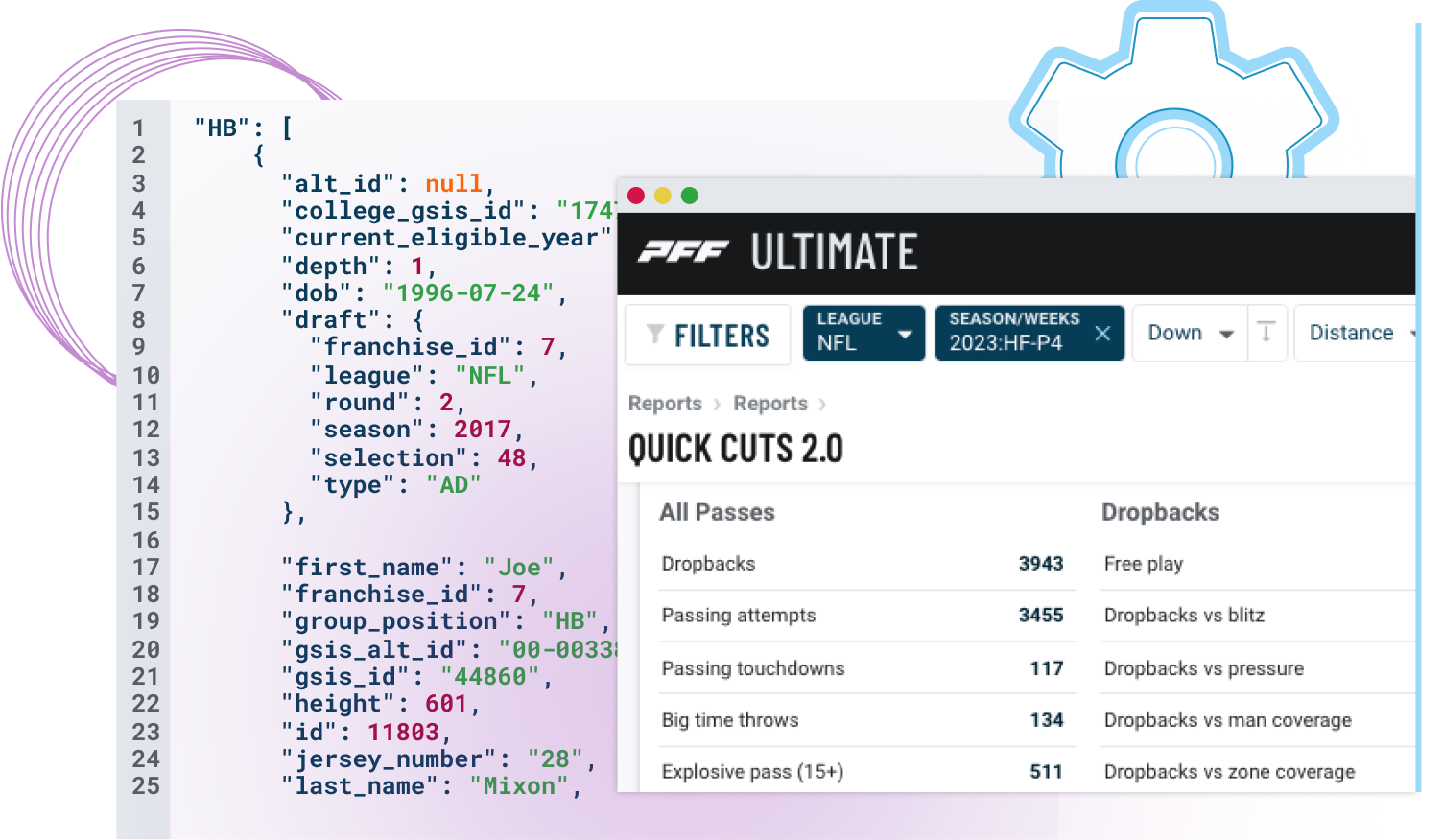#1 American Football data provider in the world
The most comprehensive football database in the world. PFF goes to an unmatched level of detail capturing anything quantifiable relating to player performance.
Our clients include sportsbooks, betting syndicates, video game studios, fantasy companies, financial service firms, & other vendors. PFF data is leveraged in a multitude of different ways from player evaluation to creating more efficiencies within betting lines.

Core Data Offerings
Our selection of tiered data packages are designed to fulfill your specific information needs. From essential datasets to in-depth analytics, our offerings allow you to access valuable insights and make informed decisions, no matter the scale of your requirements.

Tier 1 - Play-by-play/Premium Data
Our most in-depth package. Includes play-level grades, detailed coverages, and schemes.
- +/- Player Grades
- Coverage Schemes, Pass concepts, Route types, Run concepts
- Pass concepts, Route Types
- RPOs, Run POA, Big Time Throws

Tier 2 - Advanced Data
Integration-ready data formats for use with XOS and DVSport. Delivered and updated automatically into a SQL server via API
- Personnel packages, Positional alignment, Formations
- Coverage matchups, Target locations
- Blitzes
- 0-100 PFF Grades

Tier 3 - Basic Data
Our consumer data package. Includes everything in Premium Stats at the game and season level.
- Down, distance, clock, field position
- Box score stats

PFF is core to our customers process
PFF’s data collection process includes up to 65 man hours per game and comprises a team of 300+. Our data collectors go through a rigorous process upon selection. The most experienced data collectors move on to collect our highest level of data collection, which include the PFF grades. PFF also employs former coaches, players, and other league personnel to help improve the processes as the game continues to evolve.

Grades vs. stats
PFF grades the play, not its result, so the quarterback that throws the ball to defenders will be downgraded whether the defender catches the ball to notch the interception on the stat sheet or not. No amount of broken tackles and yards after the catch from a bubble screen will earn a quarterback a better grade, even though his passing stats may be getting padded. Statistics can be indicative of performance but don’t tell the whole story and can often lie badly.
The same is true for most positions. Statistics can be misleading. A tackle whose quarterback gets the ball out of his hands quicker than anybody else may not give up many sacks, but he can still be beaten often and earn a poor grade. Here’s a great example from the 2016 season as to why grades and stats may not match up:
In 2016, Atlanta Falcons edge rusher Vic Beasley led the NFL in sacks in a breakout season for the NFC Champions, but he was only the 31st-ranked edge rusher in terms of PFF pass-rushing grade and 50th in terms of pressure-based win rate.